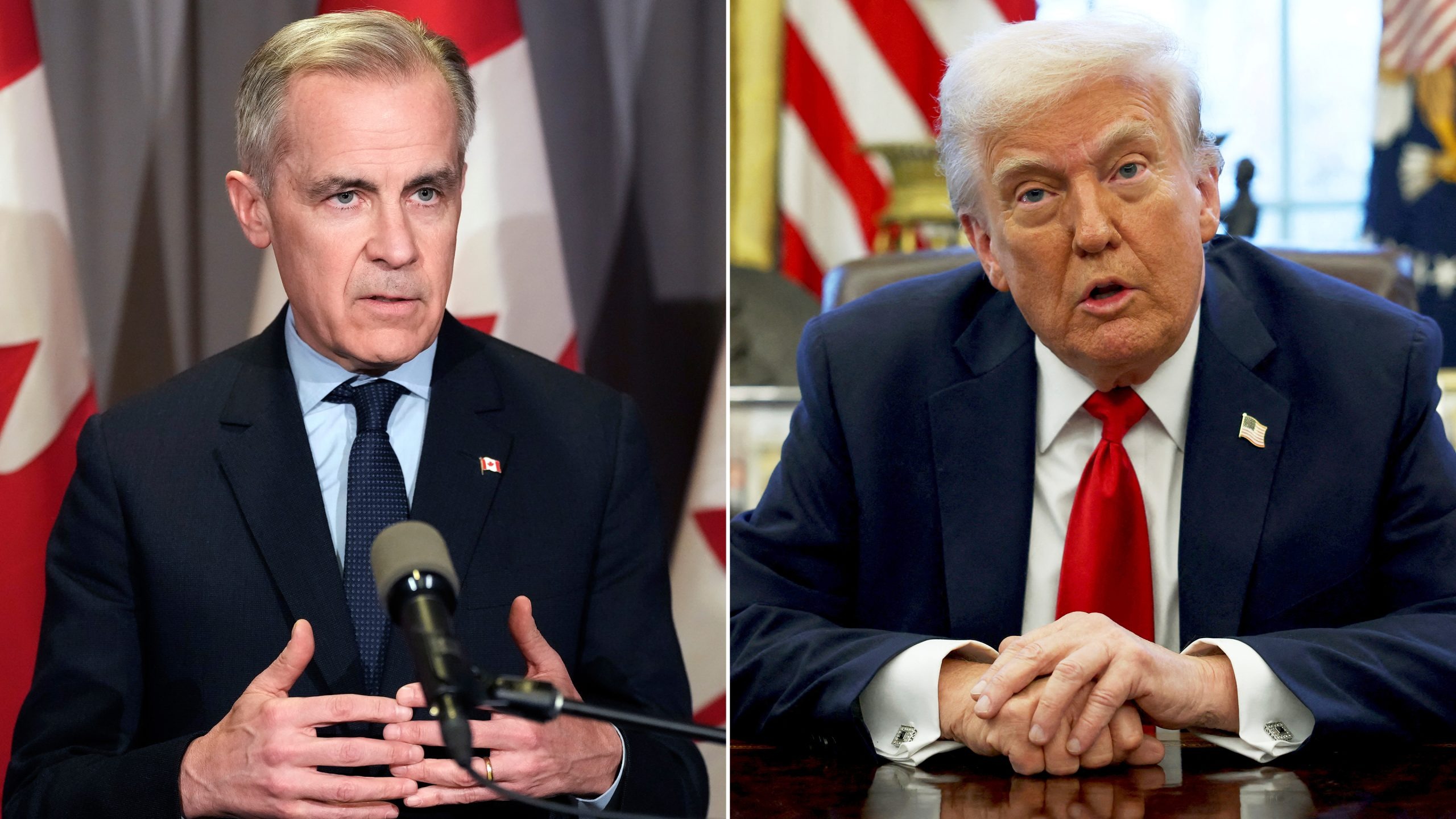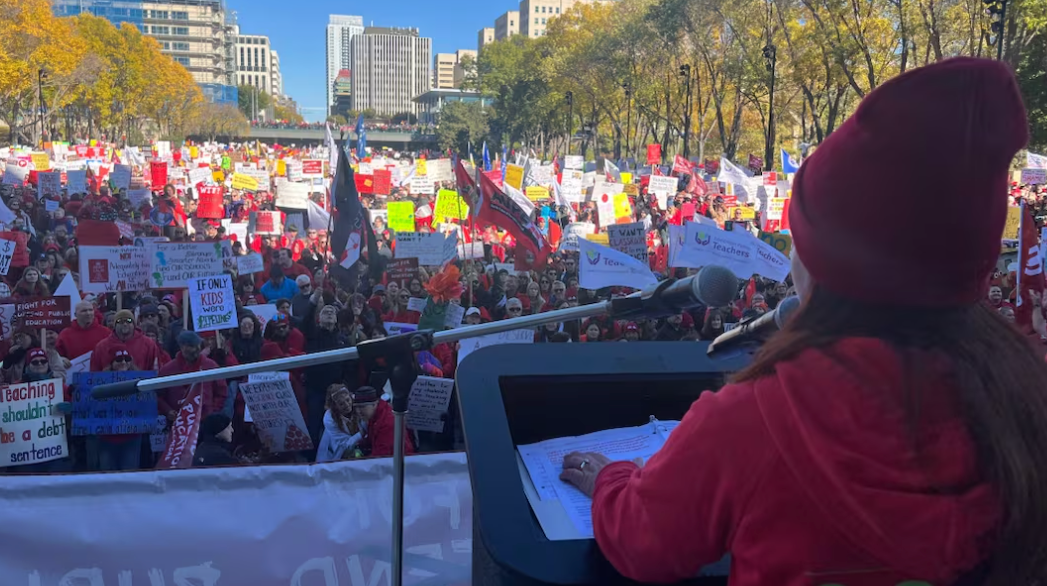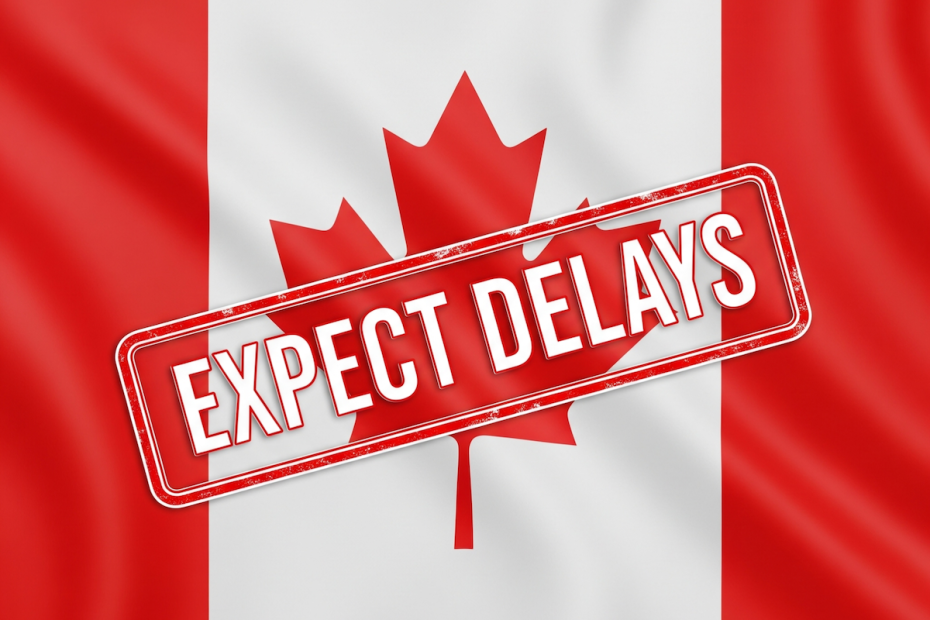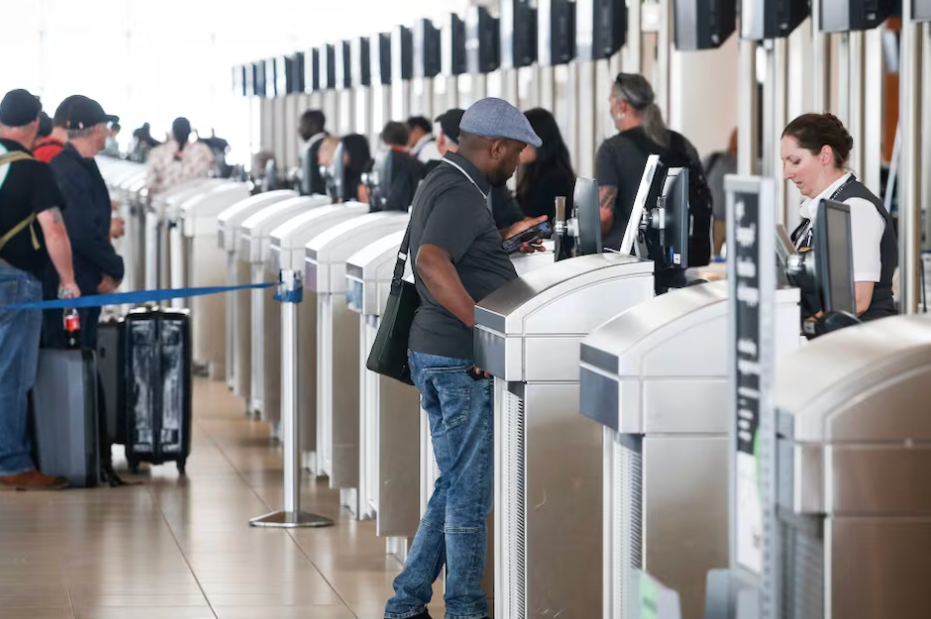一句话总结——
美国总统唐纳德·特朗普周四晚间威胁要从下个月开始对所有加拿大商品征收35%的关税。特朗普在他的社交媒体网站上发布给总理马克·卡尼的一封信中警告说,如果加拿大进行报复,税率可能会更高。
感兴趣了解全貌的朋友请继续阅读本期新闻精读👇
美国总统唐纳德·特朗普威胁要对所有加拿大商品征收35%的关税,因为两国一直在进行谈判以达成某种贸易协议。
U.S. President Donald Trump is threatening to slap a 35 per cent tariff on all Canadian goods as the two countries have been engaged in negotiations to reach some sort of trade agreement.
threatening to slap: 这里用“threatening to slap”表示“威胁要施加”,其中“slap”在口语中有“突然施加”的意思,形象生动。
tariff (n.): 关税,是对进口货物征收的税。
have been engaged in negotiations: 现在完成进行时,强调从过去持续到现在的“谈判”行为。
some sort of: 表示“不确定的某种”,是口语中常见的表达方式。
特朗普的最新威胁来自周四晚上,总统在他的社交媒体网站Truth Social上发布了一封给首相马克·卡尼(Mark Carney)的信。
Trump's latest threat came in a letter to Prime Minister Mark Carney that the president posted to his social media site, Truth Social, on Thursday evening.
latest threat: “最新的威胁”,形容词latest表示“最近的,最新的”。
came in a letter: 表示“以一封信的形式出现”,come in sth 是固定表达,意为“以……形式出现”。
posted to his social media site: post 在社交媒体语境中是“发布”,注意to后面跟地点。
Truth Social: 是特朗普自己创立的社交平台,文化背景信息。
“如果加拿大或您所在国家/地区的公司决定在美国境内生产产品,将不会征收关税,”信中写道。
"There will be no tariff if Canada, or companies within your country, decide to manufacture product within the United States," the letter read.
manufacture product: “生产产品”,manufacture是正式用词,意为“大规模制造”。
the letter read: 这是新闻报道中常用表达,意为“信中写道”。
特朗普表示,关税将于 8 月 1 日生效,并写道,如果加拿大进行报复,他将增加关税。
Trump said the tariffs will take effect on Aug. 1, and wrote that he will increase the levies if Canada retaliates.
take effect: 固定短语,表示“生效,开始实施”。
levies (n.): 征收的税款,levy是名词,复数形式。
if Canada retaliates: 条件状语从句,retaliate (vi.) 表示“报复,反击”。
特朗普和卡尼一直在进行谈判,以便在 7 月 21 日之前达成某种贸易解决方案。卡尼的办公室表示,他已经收到了这封信,总理在社交媒体上发帖表示,他致力于保护加拿大工人和企业。
Trump and Carney have been locked in negotiations to come to some sort of trade resolution by July 21. Carney's office said he had received the letter, and the prime minister said in a social media post he was committed to defending Canadian workers and businesses.
have been locked in negotiations: 表示“陷入、持续进行谈判”,locked in 是固定搭配,表示“陷入某状态”。
come to some sort of trade resolution: 达成某种贸易解决方案,resolution表示“解决方案,决定”。
by July 21: 表示截止日期,“不迟于7月21日”。
committed to doing sth: 固定搭配,表示“致力于做某事”。
虽然卡尼表示加拿大将就修改后的截止日期进行谈判,但他也补充说,该国正在“加强我们在世界各地的贸易伙伴关系”。
While Carney said Canada would negotiate to the revised deadline date, he also added the country was "strengthening our trade partnerships throughout the world."
while: 在这里表示“虽然,尽管”,引导让步状语从句。
strengthening our trade partnerships: 加强贸易伙伴关系
throughout the world: 介词短语,表示“遍及全世界”。
在信中,特朗普再次引用了芬太尼从加拿大“涌入”美国——尽管数据继续显示,与美国南部边境相比,穿越加拿大-美国边境的药物数量极少。
In his letter, Trump again cited fentanyl "pouring" into the U.S. from Canada — even though data continues to show that minimal amounts of the drug are crossing the Canada-U.S. border compared to the U.S.'s southern border.
cited fentanyl "pouring" into: 引用芬太尼“涌入”,pouring用引号突出,形象地表达大量流入。
minimal amounts: 极少量,minimal是形容词。
compared to: 用于比较,相当于“与……相比”。
Canada-U.S. border vs U.S.'s southern border: 文化背景,说明主要毒品来源地在南部边境,而非加拿大边境。
自去年11月再次当选以来,特朗普一直在抱怨芬太尼越过北部边境。上任后,他征收关税,称此举旨在惩罚加拿大在打击芬太尼毒品贸易方面做得不够。
Trump has been complaining about fentanyl crossing the northern border since he was re-elected in November. After taking office, he imposed tariffs he said are designed to punish Canada for not doing enough to crack down on the fentanyl drug trade.
has been complaining: 现在完成进行时,强调持续抱怨的状态。
imposed tariffs: impose (v.) 征收(关税、税款),过去式。
crack down on: 短语动词,意为“严厉打击”。
卡尼在声明中表示,加拿大在阻止芬太尼流动方面取得了“重要进展”。
Carney said in his statement that Canada had made "vital progress" in stemming the flow of fentanyl.
had made: 过去完成时,强调在过去某一时间点之前已经取得的进展。
vital progress: 重要的进展,vital表示“至关重要的”。
stemming the flow: stem是动词,意为“阻止、遏制”,flow指“流动”。
他说:“我们致力于继续与美国合作,拯救我们两国的生命并保护我们的社区。”
"We are committed to continuing to work with the United States to save lives and protect communities in both our countries," he said.
现在,总统似乎通过与边境相关的关税更进一步,承诺征收 35% 的关税。作为边境相关关税制度的一部分,美国目前正在对所有不符合 CUSMA 要求的商品征收 25% 的关税,并对能源和钾肥征收 10% 的较低税率。
Now, the president seems to be taking the border-related tariffs a step further by promising a 35 per cent levy. The U.S. is currently imposing a 25 per cent tariff on all non-CUSMA compliant goods coming from Canada and a lower 10 per cent rate on energy and potash as part of a border-related tariffs regime.
taking ... a step further: 表示“进一步加码”,常用表达。
promising a 35 per cent levy: levy在这里也是“税款”,相当于tariff。
non-CUSMA compliant goods: 不符合CUSMA(加拿大-美国-墨西哥协定)标准的商品,compliant形容词,表示“遵守的”。
potash:钾肥,是加拿大重要出口产品。
tariffs regime: 税收制度,regime指“制度、政权”。
一位特朗普政府官员周五告诉CBC新闻,35%的关税预计不适用于符合CUSMA的商品,而仅适用于目前关税为25%的商品。然而,这位官员表示,总统尚未做出最终决定。
A Trump administration official speaking on background told CBC News Friday that the 35 per cent levy is not expected to apply to goods that comply with CUSMA, and would apply only to goods currently tariffed at 25 per cent. However, the official said the president had not made a final decision.
speaking on background: 新闻术语,指“匿名提供信息”。
not expected to apply: 表示“预计不会适用”,expect后接不定式被动结构。
goods currently tariffed at 25 per cent: 目前征收25%关税的商品,tariff作动词使用。
特朗普还承诺对进入美国的铜征收 50% 的关税。根据联邦数据,加拿大在 2023 年出口了价值约 93 亿美元的铜和铜产品,其中大部分(52%)销往美国,中国和日本紧随其后,分别占加拿大出口的 17% 和 12%。
Trump has also been promising to slap a 50 per cent tariff on copper coming into the U.S. According to federal data, Canada exported some $9.3 billion worth of copper and copper-based products in 2023, with a majority of that — 52 per cent — going to the U.S. China and Japan followed, with 17 and 12 per cent of Canadian exports, respectively.
has also been promising: 现在完成进行时,强调持续做出承诺。
slap a tariff on: 口语化表达“征收关税”。
some $9.3 billion worth of: 表示“价值约93亿美元”,worth是形容词。
a majority of that: 表示“其中大多数”,代指前文提到的铜产品。
China and Japan followed: 用于排序,表示“随后是中国和日本”。
respectively: 分别对应,常用词汇。
尽管他在周四的信中主要提到了芬太尼,但特朗普还列出了其他刺激因素,例如加拿大的供应管理系统。
Although he primarily cited fentanyl in his Thursday letter, Trump also listed other irritants, such as Canada's supply management system.
primarily: 副词,表示“主要地”。
irritants: 名词,表示“刺激因素、争议点”,比literal的“刺激物”更抽象。
supply management system: 加拿大特有的供应管理制度,限制农产品供应以控制价格,是贸易争端焦点。
卡尼和特朗普一直在进行直接对话,本月总统在阿尔伯塔省参加 6 月的 G7 峰会时,两人同意尝试解决贸易争端。
Carney and Trump have been having direct conversations with each other, and the two agreed to try to resolve trade disputes this month when the president was in Alberta for the G7 summit in June.
direct conversations: 直接对话,强调沟通方式。
trade disputes: 贸易争端,dispute是争议。
外交部长安妮塔·阿南德(Anita Anand)周四上午表示,她希望能在7月21日的最后期限前达成协议。
Foreign Affairs Minister Anita Anand said just Thursday morning that she was hopeful an agreement could be reached by the July 21 deadline.
just Thursday morning: 时间状语,强调“就在周四上午”。
by the July 21 deadline: 表示截止日期“7月21日前”。
“这是我们全力以赴的一项努力,对我们经济的健康是必要的,”阿南德在马来西亚告诉记者,她正在马来西亚参加东南亚国家联盟 (ASEAN) 峰会,作为印太地区之行的一部分。
"This is an effort that we are putting all our weight behind, it is necessary for the health of our economy," Anand told reporters from Malaysia, where she is attending the Association of Southeast Asian Nations (ASEAN) summit as part of a tour of the Indo-Pacific region.
putting all our weight behind: 习语,表示“全力支持,竭尽全力”。
necessary for the health of our economy: 这里health引申为“健康、良好状态”。
“我们仍然希望能够达成协议。”
“We are still hopeful that an agreement can be achieved.”






